News Updates
NEWS CENTER
Related News
There is currently no data available
The State Council Information Office held a press conference on intellectual property work in the first half of 2023
Release Time:
2023-07-18
The State Council Information Office held a press conference at 10 a.m. on July 18, 2023 (Tuesday), inviting Hu Wenhui, Deputy Director of the State Intellectual Property Office, Ge Shu, Director of the Strategic Planning Department, Zhang Zhicheng, Director of the Intellectual Property Protection Department, and Intellectual Property Application Promotion Lei Xiaoyun, Director of the Department, introduced the relevant situation of intellectual property work in the first half of 2023 and answered reporters’ questions.
Picture and text records
Xie Yingjun, Deputy Director and Spokesperson of the Information Bureau of the State Council Information Office:
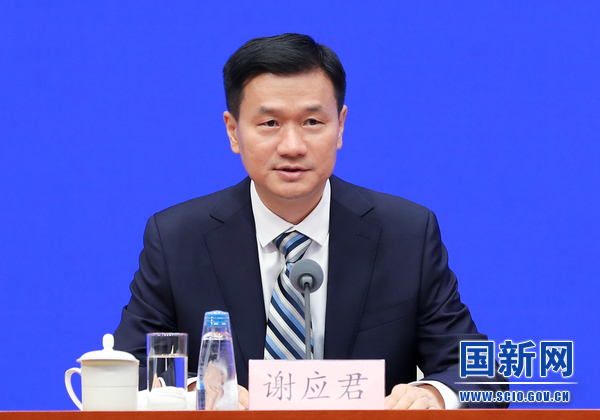
Xie Yingjun (Photo by Luan Haijun)
Ladies and gentlemen, good morning! Welcome to the press conference of the State Council Information Office. Today we are very pleased to invite Mr. Hu Wenhui, Deputy Director of the State Intellectual Property Office, to introduce to you the relevant situation of intellectual property work in the first half of 2023 and answer questions that you are interested in. Also present at today's press conference were: Mr. Ge Shu, Director of the Strategic Planning Department of the State Intellectual Property Office, Mr. Zhang Zhicheng, Director of the Intellectual Property Protection Department, and Ms. Lei Xiaoyun, Director of the Department of Intellectual Property Utilization Promotion.
Next, we will first invite Mr. Hu Wenhui to make an introduction.
Hu Wenhui, Deputy Director of the State Intellectual Property Office:
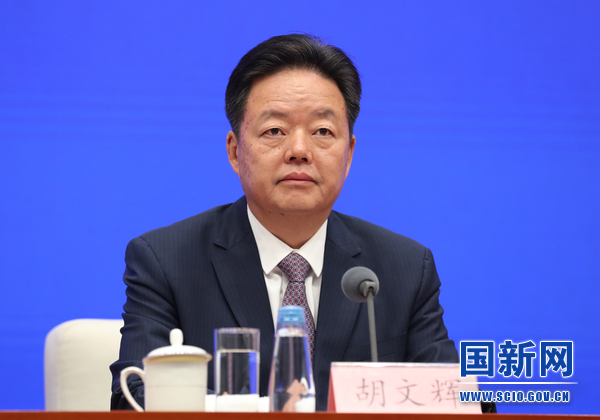
Hu Wenhui (photo by Xu Xiang)
Thank you host. Dear friends from the media, good morning! First of all, thank you for your long-term concern and support for intellectual property work.
In the first half of this year, under the strong leadership of the Party Central Committee with Comrade Xi Jinping as the core, the State Intellectual Property Office and local intellectual property management departments fully implemented General Secretary Xi Jinping’s important instructions on intellectual property work and the decisions and arrangements of the Party Central Committee and the State Council, and studied in depth Implement the spirit of the 20th National Congress of the Communist Party of China, the Second Plenary Session of the 20th Central Committee of the Communist Party of China and the Two National Sessions, and actively play the important role of intellectual property in supporting the construction of the national innovation system, building a new open economic system and shaping a good business environment. The main intellectual property rights The indicators are running smoothly, and the development of intellectual property undertakings is making steady progress and improving quality. Below, I briefly introduce the relevant situation.
1. Main data
In terms of patents: in the first half of the year, a total of 433,000 invention patents, 1.104 million utility model patents, and 344,000 design patents were authorized. Accepted 35,000 PCT international patent applications. 33,000 patent review cases were concluded and 4,433 invalidation cases were concluded. Chinese applicants submitted a total of 957 international design applications through the Hague System.
As of the end of June this year, the number of valid invention patents in my country reached 4.568 million, a year-on-year increase of 16.9%.
In terms of trademarks: a total of 2.018 million trademarks were registered in the first half of the year. The review of 87,000 trademark opposition cases and the review of 182,000 trademark review cases of various types were completed. 3,024 applications for Madrid trademark international registration were received from domestic applicants.
As of the end of June this year, the number of valid registered trademarks in my country reached 44.235 million, a year-on-year increase of 9.1%.
In terms of geographical indications: In the first half of the year, a total of 3 geographical indication products were approved for protection, 97 registrations of geographical indications as collective trademarks and certification marks were approved, and 3,509 business entities were approved to use special signs for geographical indications.
As of the end of June this year, a total of 2,498 geographical indication products have been approved, a total of 7,173 geographical indications have been approved for registration as collective trademarks and certification marks, and a total of more than 25,000 business entities have been approved to use geographical indication special signs.
In terms of integrated circuit layout design: In the first half of the year, a total of 4,861 integrated circuit layout design certificates were issued in my country.
As of the end of June this year, my country had issued a total of 66,000 integrated circuit layout design licenses.
In terms of intellectual property protection: In the first half of the year, intellectual property management departments at all levels across the country handled a total of 21,000 administrative cases of patent infringement disputes, and guided intellectual property dispute mediation organizations to accept and mediate 50,000 disputes. Start the construction of the first batch of 10 national intellectual property protection demonstration zones.
In terms of the use of intellectual property rights: In the first half of the year, the amount of patent and trademark pledge financing in my country reached 267.66 billion yuan, a year-on-year increase of 64.6%. From January to May this year, the total import and export volume of intellectual property royalties was 157.78 billion yuan, a year-on-year increase of 5.8%.
2. Main features
First, the number of domestic patents and trademarks has steadily increased. As of the end of June this year, the number of valid domestic invention patents in my country was 3.683 million, a year-on-year increase of 20.4%. Among them, valid invention patents that have been maintained for more than 10 years reached 559,000, accounting for 15.2%, an increase of 1.6 percentage points from the same period last year. The number of valid domestic registered trademarks was 42.177 million, a year-on-year increase of 9.4%, showing a steady growth trend.
Second, the number of innovative companies with patents is growing rapidly. As of the end of June this year, the number of companies in my country with valid invention patents reached 385,000, an increase of 60,000 from the same period last year, and a total of 2.605 million valid invention patents, accounting for more than 70% of the domestic total, an increase of 1.8 from the same period last year. percentage point. Among them, high-tech enterprises and specialized and new "little giant" enterprises owned 1.804 million pieces, a year-on-year increase of 23.3%, which was 2.9 percentage points higher than the domestic average growth rate.
Third, the patent reserve in the field of digital technology has been further strengthened. According to the statistics of 35 technical fields classified by the World Intellectual Property Organization, as of the end of June this year, the top three technical fields with the highest growth rate of effective invention patents in my country were computer technology management methods, computer technology and basic communication programs, with year-on-year growth of 56.6% respectively. %, 38.2% and 26.0%, the growth rate is much higher than the domestic average of 20.4%, providing strong support for the innovative development of my country's digital economy.
Fourth, Chinese applicants are more active in applying for intellectual property rights abroad. In the first half of this year, our office accepted 33,000 PCT international patent applications submitted by domestic applicants, a year-on-year increase of 7.1%, and 3,024 Madrid trademark international registration applications, a year-on-year increase of 12.0%. Since joining the Hague Agreement in May 2022, Chinese applicants have submitted an average of more than 150 international design applications every month, ranking among the top in the world.
Fifth, my country’s intellectual property import and export scale has maintained steady growth. From January to May this year, my country's import volume of intellectual property royalties was 120.8 billion yuan, and export volume was 36.98 billion yuan. Both import and export volumes achieved growth, and intellectual property trade showed strong resilience.
The above is the relevant situation. Below we would like to answer your questions on the relevant content. Thanks.
Xie Yingjun:
Now everyone is welcome to ask questions. Please inform your news organization before asking.
CCTV reporter from China Central Radio and Television Station:
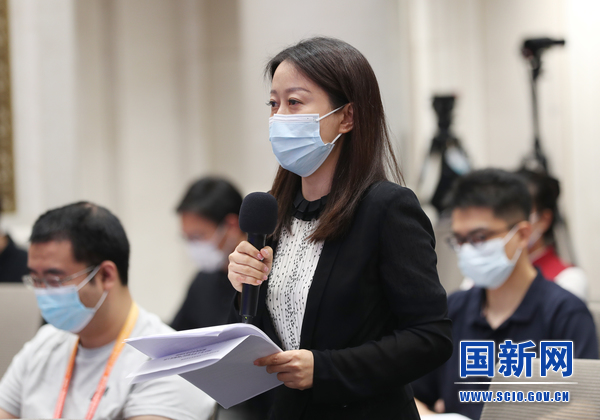
Questions from reporters from China Central Radio and Television (Photo by Liu Jian)
At present, the construction of the first batch of national intellectual property protection demonstration zones has been launched, and construction plans have been formulated in various places. Could you please introduce to us the characteristics and measures taken by various regions in the construction of intellectual property protection demonstration zones? Thanks.
Hu Wenhui:
Thank you for your question, let me answer it. Carrying out the construction of national intellectual property protection demonstration zones is a major measure to implement the decisions and arrangements of the Party Central Committee and the State Council on strengthening intellectual property protection. At present, the places where the first batch of demonstration zones are being built are intensifying reform and innovation efforts in light of regional development realities, striving to create a highland for intellectual property protection and improve the level of intellectual property protection. Judging from the progress of work in various places, it mainly reflects the characteristics of three aspects:
The first is to overcome difficulties in the reform of systems and mechanisms. All localities have taken the lead in exploring and removing blockages and difficulties in promoting the improvement of intellectual property management systems, improving intellectual property protection mechanisms, and optimizing intellectual property protection laws and regulations in the region. For example, Tianjin Binhai New Area, Hefei, Nanjing, Hangzhou and other places have proposed to improve the establishment of intellectual property management institutions, promote the unified management of multiple types of intellectual property rights, and strengthen the construction of professional talent teams such as intellectual property administrative adjudication and administrative law enforcement; various places have proposed revisions Local regulations related to intellectual property protection in the region.
The second is to work hard in the protection of the whole chain. In response to the actual needs of innovative entities and operating entities, various localities have strengthened law enforcement and case handling, strengthened overall planning and coordination, and further improved protection effectiveness. For example, Hefei proposed to establish an intellectual property arbitration court to improve the rapid resolution mechanism of disputes; Nanjing proposed to improve regional joint law enforcement cooperation; Suzhou proposed to establish an "online cross-border intellectual property service industry cluster"; Hangzhou proposed to increase the number of Internet-related intellectual property infringements The severity of the behavior.
The third is to pioneer and innovate in ensuring high-quality development. All regions should give full play to the important role of the intellectual property system in protecting and stimulating innovation, laying a solid foundation for high-quality regional economic development. For example, Tianjin Binhai New Area proposed to carry out the Beijing-Tianjin-Hebei coordinated development intellectual property empowerment project; Ningbo and other places proposed to deepen the collaborative work of intellectual property case filing assistance, investigation and evidence collection, and mutual recognition of evidence in the Yangtze River Delta cities; Guangzhou and Shenzhen proposed to deploy Guangdong, Hong Kong and Macao University Intellectual property protection work in the Bay Area effectively solves the difficulties and obstacles faced by enterprises in intellectual property protection.
In the next step, the State Intellectual Property Office will continue to strengthen collaboration with various local departments to promote the high-quality development of the construction of national intellectual property protection demonstration zones, form a number of distinctive highlight practices, create a number of protection demonstration benchmarks, and drive the national intellectual property protection Overall level improvement. Thanks.
Southern Metropolis Daily reporter:
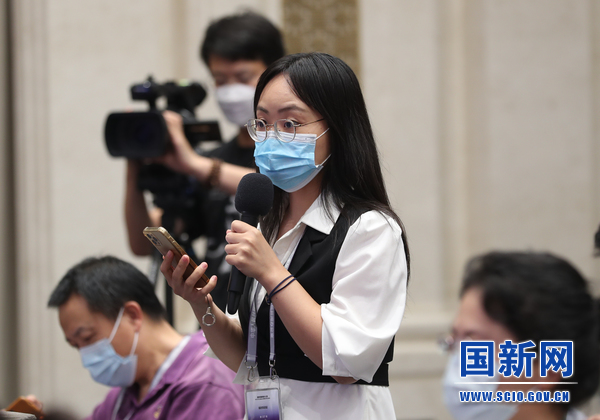
Southern Metropolis Daily reporter asked questions (Photo by Liu Jian)
The report of the 20th National Congress of the Communist Party of China proposed to accelerate the development of the digital economy and promote the deep integration of the digital economy and the real economy. What is the current innovation status of my country’s core industries in the digital economy? Please do an analysis from the data aspect. Thanks!
Hu Wenhui:
Thank you for your question. Regarding questions about the digital economy, I would like to ask Director Ge Shu from our Strategic Planning Department to answer.
Ge Shu, Director of the Strategic Planning Department of the State Intellectual Property Office:
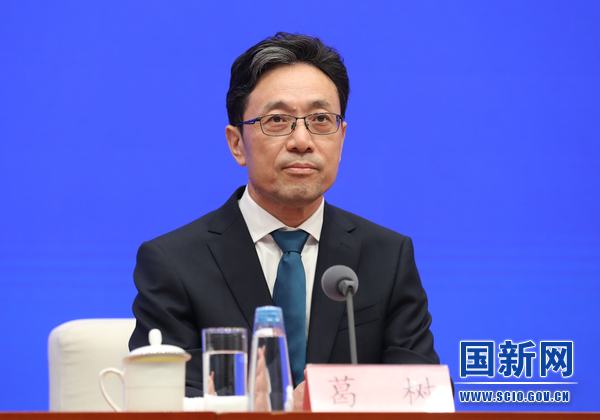
Ge Shu (photo by Xu Xiang)
Thanks. The Party Central Committee and the State Council attach great importance to the development of the digital economy. General Secretary Xi Jinping profoundly pointed out that "digital technology and digital economy are the first opportunities for the world's scientific and technological revolution and industrial transformation, and are key areas for a new round of international competition." Currently, patent innovation in the core industries of my country's digital economy is booming. Statistics show that as of the end of 2022, the number of valid invention patents in my country's core industries of the digital economy was 1.60 million, of which 1.273 million were domestic. The overall number of domestic and foreign patents in China showed an "82" pattern. The development of patents in the core industries of my country's digital economy mainly presents the following four characteristics:
First, invention patents in core industries of the digital economy are growing rapidly. From 2016 to 2022, the average annual growth rate of invention patent authorizations in my country's core industries of the digital economy reached 18.1%, which is 1.5 times the average annual growth rate of my country's total invention patent authorizations during the same period. Among them, 335,000 invention patents in core industries of the digital economy will be authorized in 2022, a year-on-year increase of 17.5%.
Second, domestic enterprises have strong innovation momentum in the field of digital economy. As of the end of 2022, corporate ownership accounted for 70.9% of the valid invention patents in the core industries of the domestic digital economy. Taking advantage of domestic massive data and rich application scenarios, local innovation forces have risen, and domestic leading companies have continued to emerge, becoming an important force in promoting the development of the digital economy.
Third, the eastern region has obvious innovation advantages in the digital economy. As of the end of 2022, the effective number of invention patents in the core industries of the digital economy in the Yangtze River Delta, Guangdong-Hong Kong-Macao Greater Bay Area and Beijing-Tianjin-Hebei region accounted for 71.3% of the domestic total, showing a "three strong" situation, which is very important for promoting regional economic transformation and high-quality development has played a positive role.
Fourth, more foreign companies are coming to China to carry out patent layout in the digital economy. As of the end of 2022, 95 countries (regions) have 327,000 invention patents in core industries of the digital economy in China, of which digital product manufacturing accounts for 62.7%. Foreign companies are strengthening their patent layout in key industries such as semiconductors, communication system equipment, and optoelectronic devices, and Chinese companies need to increase their technological research efforts in related fields.
In the next step, our office will continue to strengthen the statistical monitoring of patents in core industries of the digital economy and key digital technologies to provide better service support for the development of my country's digital economy. Thanks.
Reporter from Hong Kong Bauhinia Magazine:
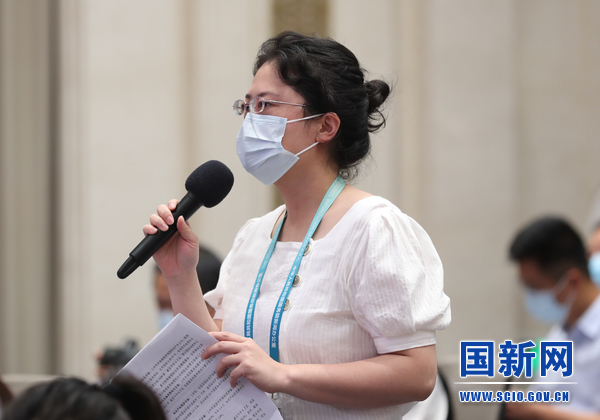
Questions from a reporter from Hong Kong Bauhinia Magazine (photo by Liu Jian)
The new patent law that will be implemented in 2021 introduces an early resolution mechanism for pharmaceutical patent infringement disputes. In the two years since this work was implemented, what are the specific cases? What role has this work played in increasing the protection of pharmaceutical intellectual property rights? Thanks.
Hu Wenhui:
Thank you for your question. Regarding the question of drug patent links, please ask Zhang Zhicheng, Director of our Intellectual Property Protection Department, to answer.
Zhang Zhicheng, Director of the Intellectual Property Protection Department of the State Intellectual Property Office:
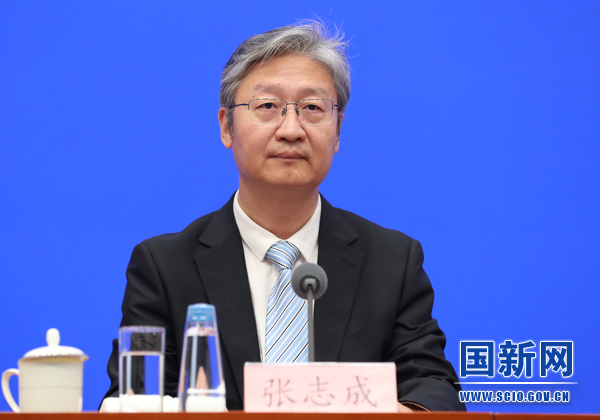
Zhang Zhicheng (photo by Xu Xiang)
Thanks. Original drugs require high investment in research and development, are difficult to innovate, have relatively long marketing cycles, and have relatively high prices. The high profitability of drug patents has led to differences in interests between original drug and generic drug companies, which require relevant systems to balance them. In recent years, especially since the implementation of the new patent law in 2021, the State Intellectual Property Office, together with the Supreme People's Court, the National Medical Insurance Administration, the State Food and Drug Administration and other relevant departments, has actively carried out research and exploration on the intellectual property protection mechanism in the pharmaceutical field, and solidly promoted pharmaceutical patent protection. In all work, the legitimate rights and interests of drug intellectual property rights holders are strictly protected in accordance with the law.
In July 2021, the State Intellectual Property Office and the State Food and Drug Administration jointly issued the "Implementation Measures for the Early Resolution Mechanism of Drug Patent Disputes (Trial)" and "Administrative Adjudication Measures for the Early Resolution Mechanism of Drug Patent Disputes" to achieve the approval of generic drug listings and innovative drug patents Interlinking of effectiveness reviews. In the past two years, our bureau has received a total of 140 requests for relevant administrative adjudication cases and concluded 112 cases involving more than 30 kinds of drugs and more than 50 specifications. A total of 25 original pharmaceutical companies have filed requests against 42 generic drug companies as petitioners, among which the anti-tumor drug neratinib maleate tablets has been involved in the largest number of cases. The average settlement period for completed cases is approximately 166 days, and the shortest settlement period is 35 days. The implementation of this system not only strengthens the protection of intellectual property rights during the drug review and approval stage, safeguards the legitimate rights and interests of innovative pharmaceutical companies and patentees, improves the pharmaceutical innovation environment, and further stimulates the enthusiasm of enterprises for R&D and innovation; it also promotes It encourages generic drug companies to carry out generic drug R&D activities, encourages them to launch patent challenges, promotes the early launch of generic drugs, and improves drug accessibility.
In the next step, our bureau will continue to work with relevant departments to increase intellectual property protection in the pharmaceutical field, stimulate innovation in the pharmaceutical industry through institutional innovation and departmental collaboration, and give more attention, support and protection to pharmaceutical innovation achievements. At the same time, our bureau will actively explore a medical intellectual property protection model that is more in line with national conditions, protect the rights and interests of rights holders and social public interests in accordance with the law, and promote new and good drugs to benefit the people more and better. Thanks.
China Business News reporter:

China Business News reporter asked a question (photo by Liu Jian)
Intellectual property pledge financing is an important means to relieve and empower small and medium-sized enterprises. In the introduction just now, we learned that the amount of pledge financing has grown very rapidly in recent years. Please tell me, what measures has the Intellectual Property Office taken to serve small and medium-sized enterprises and promote pledge financing? Thanks.
Hu Wenhui:
Thank you for your question. Regarding the question of pledge financing, please ask Lei Xiaoyun, Director of the Promotion Department, to answer it.
Lei Xiaoyun, Director of the Intellectual Property Utilization Promotion Department of the State Intellectual Property Office:
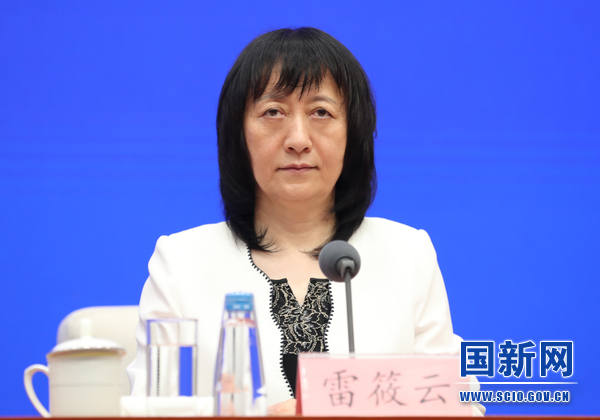
Lei Xiaoyun (photo by Xu Xiang)
Thanks. In recent years, the State Intellectual Property Office has used intellectual property pledge financing as an important means to support the relief and empowerment of technology-based small, medium and micro enterprises, and has actively promoted it in conjunction with relevant departments. In 2022, the national patent and trademark pledge financing amount will reach 486.88 billion yuan, maintaining a growth rate of more than 40% for three consecutive years. Since the beginning of this year, the State Intellectual Property Office has made efforts to promote intellectual property pledge financing in various aspects such as strengthening business guidance, improving evaluation capabilities, and optimizing service measures. In the first half of the year, the national patent and trademark pledge financing amount reached 267.66 billion yuan, a year-on-year increase of 64.6%, and there were 16,000 pledge projects, a year-on-year increase of 56.9%. Among them, inclusive patent and trademark pledge projects with a pledge amount of less than 10 million yuan accounted for 72.5%, benefiting 11,000 small, medium and micro enterprises, a year-on-year increase of 54.4%, and the inclusive scope was further expanded. The relevant work measures are as follows.
The first is to strengthen business guidance. Together with the State Administration of Financial Supervision and the National Development and Reform Commission, we will further promote the action of intellectual property pledge financing to benefit enterprises in the park, guide local governments to improve risk sharing and compensation mechanisms, deepen government-bank cooperation, enrich pledge financing products and service models, and select and release the first batch of 20 intellectual property rights Typical cases of pledge financing and insurance will promote good practices and excellent experiences. Work with the People's Bank of China and other departments to improve the "Action Plan for Increasing Support for Financing of Science and Technology Enterprises", which will promote the transformation of intellectual property finance and strengthen intellectual property transactions as important contents.
The second is to improve evaluation capabilities. Cooperate with the People's Bank of China and the State Administration of Financial Supervision to formulate recommended national standards for the "Patent Evaluation Guidelines", improve the patent value analysis index system, and scientifically guide patent evaluation in scenarios such as pledge financing. In conjunction with the State Administration of Financial Supervision, China Construction Bank has been guided to carry out a special pilot project for internal assessment of intellectual property pledge financing from aspects such as optimizing supervision and data support, developing intelligent assessment models and tools, improving patent value assessment and risk control capabilities, reducing assessment costs and shortening assessment cycles. , enhance the enterprise’s sense of gain.
The third is to optimize service measures. Together with the State Administration of Financial Supervision, we will continue to deepen the pilot of paperless processing of the entire process of intellectual property pledge registration in Jiangsu, Zhejiang, and Guangdong, give full play to the role of commitment production, eliminate the need to submit paper materials, and shorten the online review cycle to 1 working day. Enterprises and banks are satisfied Significant improvement. Cooperate with the National Development and Reform Commission to guide and operate the national intellectual property pledge information platform to serve financial institutions to facilitate access to patent and trademark pledge information.
Next, we will further improve policies, optimize services, continue to increase the inclusiveness and benefit of financial services such as intellectual property pledge financing, and support the healthy and high-quality development of small and medium-sized enterprises. Thanks.
Red Star News reporter:
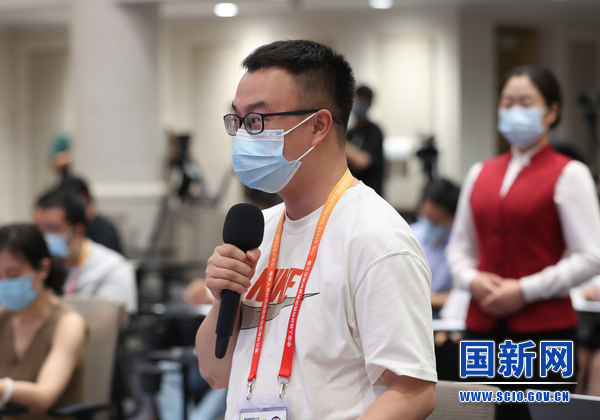
Red Star News reporter asked a question (photo by Liu Jian)
We have noticed that the State Intellectual Property Office, together with relevant departments, has recently launched a special campaign to combat malicious registration and hoarding in the field of trademarks. Please introduce the main progress of the work, thank you.
Hu Wenhui:
For three consecutive years, we have issued policy documents to signal strict governance, and worked with relevant departments to implement comprehensive policies from the legal system, trademark agency, review and control, protection and application, etc., achieving coordinated linkage in the governance of malicious trademark registrations. We continue to improve trademark review and trial standards, strengthen the application of information technology, move forward to crack down on hoarding behavior, and restrict illegal transfers for profit at the end. We have built a full-process governance work system to contain most malicious trademark registration behaviors at the source, making them impossible to Obtaining registration authorization avoids affecting social public areas such as production, business activities, and consumer markets to the greatest extent, effectively protects the rights and interests of innovation entities, business entities, and consumers, and boosts market confidence.
From January to June this year, our office has cracked down on 249,000 malicious registrations of trademarks, of which 192,000 were not authorized in trademark registration applications, objections and other authorization processes, accounting for 77.1%; invalidity declarations and other rights confirmations of registered trademarks were not confirmed. There were 56,000 rights, accounting for 22.5%. At the same time, among the above-mentioned cases, applicants took the initiative to terminate illegal activities, withdraw applications, and cancel trademarks due to the strictness of laws and policies, accounting for 81.9% of the total.
Since June this year, we have carried out special rectification on issues such as trademark applications with major adverse effects, malicious applications involving national interests, social public interests, hot topics of public concern, Internet hot words, celebrity name trademarks, etc., and have achieved phased results. .
First, we actively safeguarded public interests, promptly updated the trademark registration sensitive lexicon based on social hot spots and public opinion concerns, and disposed of 316 trademarks with major adverse effects; we carried out early warnings for major events such as the Hangzhou Asian Games, Asian Paralympic Games and Chengdu Universiade. layout. The second is to accurately crack down on trademark squatting. Registration does not automatically mean registration. We will reject trademark applications that infringe the prior rights of others in accordance with the law to stabilize the reasonable expectations of legitimate operators. The third is to effectively crack down on malicious hoarding of trademarks. A total of 2,220 malicious hoarding trademarks were cracked down on in various business links, and 173 transfers of malicious hoarding trademarks were not approved. The fourth is to restrict the abuse of trademark legal procedures. A total of 439 trademarks obtained by deception or other improper means were cracked down on, and 212 trademark registration applications filed on the same day with malicious intent were dealt with; against malicious withdrawal, malicious opposition, malicious review, malicious Conduct research on regulatory measures if they are ineffective. The fifth is to increase the supervision of trademark agencies, forward 36 illegal trademark applications for trademark agencies to the State Administration for Market Regulation, and speed up the establishment and improvement of trademark agency credit files, trademark agency credit evaluation management methods and indicator systems. Sixth, we strengthened departmental and local coordination, strengthened work linkage and information sharing with the State Administration for Market Regulation, Beijing Higher People’s Court and other departments, and forwarded 29 case clues to local governments, involving 3,836 trademarks.
In the next step, we will use special rectification as the starting point to continue to release a strong signal of strict governance, promote the deepening of the standardization of trademark registration order, and continuously improve the ability of intellectual property protection to support and optimize the innovation environment and business environment. Thanks.
The Paper reporter:
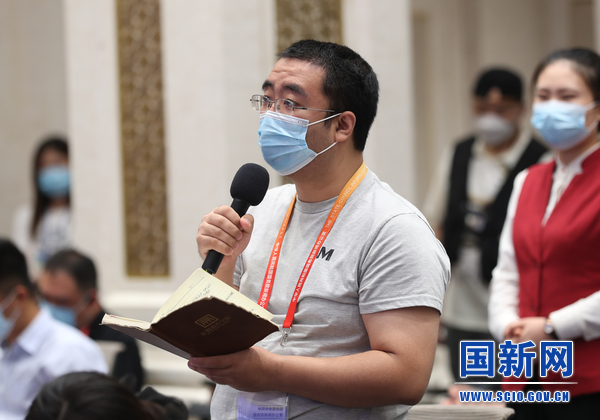
Questions from The Paper reporter (Photo by Liu Jian)
At present, my country's green and low-carbon industry is developing rapidly. Recently, the Chinese invention team won the 2023 European Inventor Award "Non-European Patent Office Member State Award". The relevant patents also belong to the field of green and low-carbon technology. What is the status of patent innovation in the field of green and low-carbon technologies in my country?
Hu Wenhui:
Thank you for your question. Regarding the patent status of green and low-carbon industries, I would like to ask Director Ge Shu of our Strategic Planning Department to answer.
Ge Shu:
Thanks. We have also paid attention to the award-winning information of Chinese enterprises, and would like to congratulate the award-winning enterprises and invention teams. This also reflects from one side that the innovative achievements of my country's green and low-carbon technologies are making positive contributions to global green development.
As this media friend mentioned, my country's green and low-carbon industry is currently developing rapidly. Since the 18th National Congress of the Communist Party of China, the Party Central Committee has attached great importance to green development and made major strategic arrangements for carbon peaking and carbon neutrality. Green and low-carbon technological innovation is the foundation and key to achieving the "dual carbon" goal. The State Intellectual Property Office attaches great importance to promoting green and low-carbon technology innovation. In accordance with the deployment of the "14th Five-Year Plan for National Intellectual Property Protection and Application", it strives to strengthen the statistical monitoring of green intellectual property rights, compile and publish the "Green and Low-carbon Technology Patent Classification System" and Relevant patent statistical analysis reports.
The latest statistics show that China is an important contributor to global green and low-carbon technology innovation. From 2016 to 2022, the total number of global green and low-carbon technology invention patent authorizations reached 558,000, of which 178,000 were authorized by Chinese patentees. The proportion reached 31.9%, and the average annual growth rate reached 12.5%, which was significantly higher than the overall global level of 2.5%.
From the perspective of innovation entities, a total of 13 Chinese companies or units have entered the top 50 global green and low-carbon technology invention patent authorizations, second only to Japan's 15 companies. These 13 include 8 enterprises and 5 scientific research institutes, including large central enterprises such as State Grid and China Southern Power Grid, as well as private enterprises represented by CATL and BYD.
Judging from the innovative and active energy storage technologies in recent years, the number of invention patent authorizations in the field of electrochemical energy storage in my country has increased from 4,300 in 2016 to 13,000 in 2022, with an average annual growth rate of 19.9%, accounting for 10% of the world's total. The proportion of the total volume increased from 35.5% to 44.9%. The patent awarded this time is an important innovation in the field of energy storage technology.
In the next step, the State Intellectual Property Office will conscientiously implement the decisions and arrangements of the Party Central Committee and the State Council, continue to improve the green patent classification system, continue to strengthen green patent statistical analysis, actively promote the transformation and application of green technology patents, and better serve green development. Thanks.
Phoenix TV reporter:
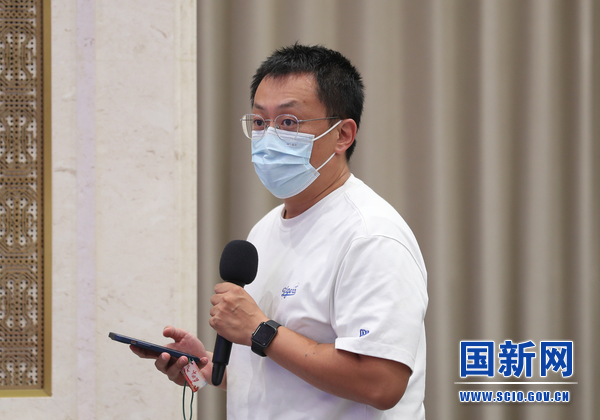
Phoenix TV reporter asked a question (Photo by Liu Jian)
This year is an important year for the "14th Five-Year Plan" to connect the past and the next. In the "14th Five-Year Plan", what are the national key special plans? Can you introduce the relevant situation in this regard? Thanks.
Hu Wenhui:
Thank you for your question. Let me answer your question. 2023 is the first year for fully implementing the spirit of the 20th National Congress of the Communist Party of China. It is also a critical year for the implementation of the national “14th Five-Year Plan” and the critical link between the past and the next. Currently, the State Intellectual Property Office is working with relevant departments to carry out a mid-term evaluation of the implementation of the special plan for intellectual property protection and application during the "14th Five-Year Plan". The achievement of indicators is an important part of the mid-term evaluation. There are 8 main indicators for the development of intellectual property during the "14th Five-Year Plan" period, covering three aspects: creation, application and protection. Judging from the latest statistical data, most indicators are progressing smoothly and in line with expectations.
In terms of creation, as of the end of 2022, my country's number of high-value invention patents per 10,000 people has reached 9.4, an increase of 3.1 from the end of the "13th Five-Year Plan". High-value patent reserves continue to strengthen, in line with the expectation of "more than half the time, more than half the progress" Target. In 2022, the number of my country's overseas invention patent authorizations will be 50,000, achieving a rapid average annual growth of 11.0% since the "14th Five-Year Plan". Affected by factors such as the COVID-19 epidemic and the decline in authorizations from major overseas patent examination agencies, the achievement of my country's overseas invention patent authorization indicators is slightly lower than expected.
In terms of application, in 2022, the registered amount of my country's intellectual property pledge financing will be 486.88 billion yuan, and the total annual import and export of intellectual property royalties will be 387.25 billion yuan, both of which have achieved the "14th Five-Year Plan" goals ahead of schedule. The role of poverty has been fully brought into play, and the scale of intellectual property trade has continued to expand. Data show that in 2021, the added value of patent-intensive industries accounted for 12.44% of GDP, an increase of 0.47 percentage points from the previous year, and the added value of copyright industries accounted for 7.41% of GDP, an increase of 0.02 percentage points from the previous year, basically in line with the expected goals.
In terms of protection, in 2022, social satisfaction with intellectual property protection reached 81.25 points, an increase of 0.64 points from the previous year. The first-instance judgment rate for intellectual property civil cases reached 89.8%, continuing to remain at a high level.
In the next step, we will continue to implement the "14th Five-Year Plan" for intellectual property in depth, highlight the quality orientation of indicators, do a good job in dynamic monitoring of major planning indicators, strengthen local classification guidance, and promote the high-quality completion of various projects in the "14th Five-Year Plan" goals and tasks to better promote the construction of an intellectual property power. Thanks.
CCTV reporter:
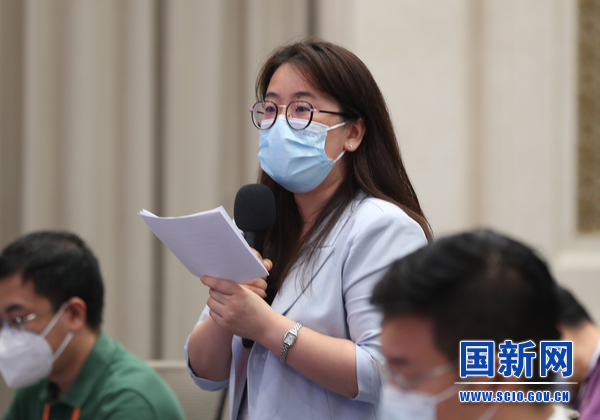
Questions from CCTV reporters (Photo by Liu Jian)
I just introduced that Chinese applicants are more active in applying for overseas intellectual property rights. I have also noticed that recent reports show that the number of intellectual property lawsuits filed by Chinese companies in the United States is generally on the rise. Please tell me, what work has the State Intellectual Property Office carried out in this regard to effectively protect the legitimate rights and interests of Chinese enterprises? Thanks.
Hu Wenhui:
Thank you for your question. This question involves the protection and rights protection of Chinese enterprises overseas. I would like to ask Director Zhang Zhicheng of our Intellectual Property Protection Department to answer this question.
Zhang Zhicheng:
Thanks. As the reporter has paid attention to, as domestic enterprises accelerate the pace of "going global", they are encountering more and more intellectual property disputes. According to statistics from the "2022 Investigation Report on Intellectual Property Disputes between Chinese Enterprises in the United States", in the past year, the number of intellectual property litigation cases involving Chinese enterprises in the United States, the number of companies involved in the lawsuits, and the number of Chinese companies involved in "337 investigations" have increased to varying degrees.
In order to improve the ability of Chinese enterprises to protect foreign-related intellectual property rights and strengthen overseas intellectual property protection work, in recent years, the State Intellectual Property Office, together with various relevant departments, has continued to strengthen the construction of a guidance mechanism for responding to overseas intellectual property disputes, and has played an important role in escorting enterprises in the process of "going global". Active service guarantee role.
First, continue to optimize the guidance network for overseas intellectual property disputes. To ensure the effective operation of the national-level Overseas Intellectual Property Dispute Response Guidance Center and local sub-centers, as of now, 43 local sub-centers have been established across the country, covering 27 provinces (autonomous regions, municipalities directly under the Central Government) across the country. Each center provides proactive and proactive services to effectively help enterprises improve their overseas intellectual property protection awareness and capabilities. From 2021 to 2022, there were 213 final judgments against Chinese companies involved in "337 investigations", among which the proportion of obtaining dominant judgments (including termination of investigations, withdrawal of plaintiffs, rulings of non-infringement, etc.) reached more than 60%, which is the second highest number in 2020. twice as much.
The second is to continuously improve the foreign-related intellectual property risk prevention and control system. Timely monitor dispute information in key areas such as patent disputes in the United States, "337 investigations", cross-border e-commerce disputes, and foreign-related trademark squatting, and strengthen early warning. This year, in response to the high incidence of overseas intellectual property disputes in key industries, we will carry out guidance on the response to overseas intellectual property disputes in the information communications and biomedical industries, effectively improving the overseas intellectual property risk response capabilities of relevant enterprises.
The third is to continue to increase the supply of overseas intellectual property information. Optimize information service platforms such as "Zhinan Needle Network", increase the interconnection and sharing of information results from local platforms, and provide enterprises with rich, efficient and timely information services. Increase the publicity and interpretation of cross-border e-commerce intellectual property protection guidelines, country guidelines, and overseas trademark rights protection guidelines in key countries, focus on the needs of enterprises going global, and continue to strengthen the supply of various information.
In the next step, our office will continue to strengthen overseas intellectual property protection work to help companies go global and promote high-quality development. Thanks.
China Daily reporter:
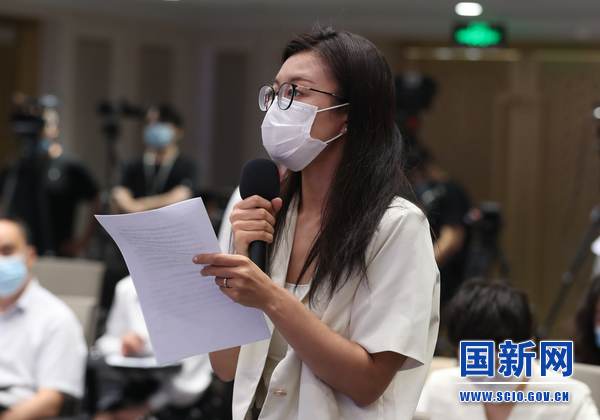
China Daily reporter asked questions (Photo by Liu Jian)
Last year, the State Intellectual Property Office launched a comprehensive patent open licensing pilot project. My question is, what innovative measures have been taken over the past year, what results have been achieved in the pilot work, and when will the relevant systems be promoted and implemented across the country? Thanks.
Hu Wenhui:
Thank you for your question. Regarding the open licensing pilot work, please give a reply from Director Lei Xiaoyun of the Application Promotion Department.
Lei Xiaoyun:
Thank you for your question. Since last year, the State Intellectual Property Office has issued a work plan and taken multiple measures to comprehensively promote the pilot work of patent open licensing. The first is to strengthen policy coordination and school-enterprise linkage. Cooperate with the Ministry of Education, the Ministry of Science and Technology, and the Ministry of Industry and Information Technology to launch the "Thousands of Schools and Thousands of Enterprises" collaborative innovation partnership action and the "Hundreds of Schools and Thousands of Projects" high-value patent cultivation and transformation action, and introduce several measures to support the innovation and development of specialized, specialized, and new small and medium-sized enterprises, which will encourage Open licensing of patents of universities and colleges to small and medium-sized enterprises is an important part of this. The second is to improve the market-based valuation mechanism. Published "Patent Open License Royalty Estimator to build a supply and demand database, use artificial intelligence, big data and other technologies to accurately compare and match open license patents and push them to small and medium-sized enterprises, organize roadshow docking activities, strengthen post-licensing industrialization guidance, and improve docking efficiency and implementation benefits.
Since the launch of the pilot, as of the end of June 2023, more than 1,500 patent holders from 22 provinces have participated in the pilot, and 35,000 patent pilot open licenses with marketability prospects and easy promotion and implementation have been selected and matched to 76,000 small and medium-sized enterprises. Enterprises have obtained nearly 8,000 licenses and achieved good results, showing the following characteristics: First, various entities actively participate. Nearly 600 universities and colleges and more than 900 enterprises participate in the pilot as patentees, including 110 national intellectual property pilot demonstration universities and many central enterprises. Second, institutional advantages have initially emerged. During the pilot, more than 1,100 patents were licensed to multiple companies, accounting for 40% of the total number of licensed patents. The "one-to-many" feature is obvious, effectively improving licensing efficiency. Third, the pilot results have been widely recognized. Relevant surveys show that 48.3% of patent holders are aware of the open patent licensing system, and 49.6% of patent holders are willing to adopt open licensing. Among them, nearly 90% of patent holders in universities are willing to adopt open licensing.
In the next step, the State Intellectual Property Office will summarize the pilot experience, strengthen policy coordination with relevant departments, and promote the full implementation of the patent open licensing system after the "Patent Law Implementing Rules" are promulgated and implemented. Thanks.
Xie Yingjun:
last question.
Reporter from China Intellectual Property News:
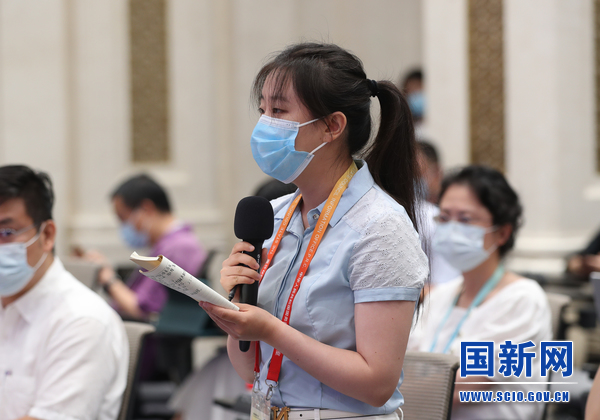
China Intellectual Property News reporter asked questions (Photo by Liu Jian)
Regarding data intellectual property rights, the State Intellectual Property Office actively conducts research and promotes local pilot projects. What is the current progress of relevant work? What are your future work plans?
Hu Wenhui:
Thank you for your question. Let me answer your question. Data is an important factor of production alongside land, labor, capital, and technology. The Party Central Committee and the State Council attach great importance to the construction of data infrastructure systems. In December last year, the “Twenty Data Articles” issued by the central government proposed the establishment of a data property rights system that protects rights and interests and is used in compliance with regulations. The State Intellectual Property Office conscientiously implements the decisions and arrangements of the Party Central Committee and the State Council, and solidly explores the construction of a data intellectual property system. By conducting theoretical research and special surveys, we have initially clarified the six basic aspects of data intellectual property rights protection objects, protection subjects, empowerment methods, rights content, protection methods and application models. By carrying out pilot data intellectual property work in 8 places, we strive to promote local data intellectual property in system construction, registration practice, rights protection and other aspects. At present, relevant local pilot work has made positive progress.
In terms of system construction, many places have incorporated data intellectual property work content into local policies and regulations related to the development of the local digital economy and the construction of data infrastructure systems, and have successively issued supporting documents such as data intellectual property registration and management measures. For example, Beijing has included the development of data intellectual property rights in the "Beijing Digital Economy Promotion Regulations", and Zhejiang clearly stipulates in the "Zhejiang Province Intellectual Property Protection and Promotion Regulations" that a data intellectual property registration system must be established to protect data intellectual property rights.
In terms of registration practice, currently, six places including Beijing, Zhejiang, Jiangsu, Shandong, Fujian, and Shenzhen have carried out data intellectual property registration work.
In terms of rights protection, intellectual property offices in Shanghai, Zhejiang, Jiangsu and other places have also made arrangements for related work.
The above is the relevant situation of data intellectual property work. Thanks!
Xie Yingjun:
Thank you to all publishers for their introductions, and to all journalist friends for their participation. That’s it for today’s press conference! (Source: Guoxin.com)
For more questions related to intellectual property rights, please scan the QR code to consult Shenzhen Shenzhen Credible, and we will answer all your questions!

More intellectual property information and services
Follow the official subscription account of [Shenxin Intellectual Property] on the code

More SangTrust dynamic news, important data/reports/cases/laws and regulations in the intellectual property industry, etc.
Follow the official service account of [Shentrust Intellectual Property Service Platform] on the code

相关新闻
Telephone:
Telephone:+86-755-82566227、82566717、13751089600
Head Office:13 / F, Building 14, Longhua Science and Technology Innovation Center (Mission Hills), No. 8 Golf Avenue, Guanlan Street, Longhua District, Shenzhen
Head Office:
13 / F, Building 14, Longhua Science and Technology Innovation Center (Mission Hills), No. 8 Golf Avenue, Guanlan Street, Longhua District, Shenzhen
Subsidiary Company:2808, Block B2, Yuexiu Xinghui Junbo, No.18 Tazihu East Road, Jiangan District, Wuhan City, Hubei Province
Subsidiary Company:
2808, Block B2, Yuexiu Xinghui Junbo, No.18 Tazihu East Road, Jiangan District, Wuhan City, Hubei Province

Service Number

Subscription Number
Copyright ©2016 Shenzhen Shenkexin patent Agency Co., LTD All rights reserved | 粤ICP备2021174526号
Copyright ©2016 深圳市深可信专利代理有限公司 版权所有 | 粤ICP备2021174526号 SEO标签
Copyright ©2016 深圳市深可信专利代理有限公司 版权所有